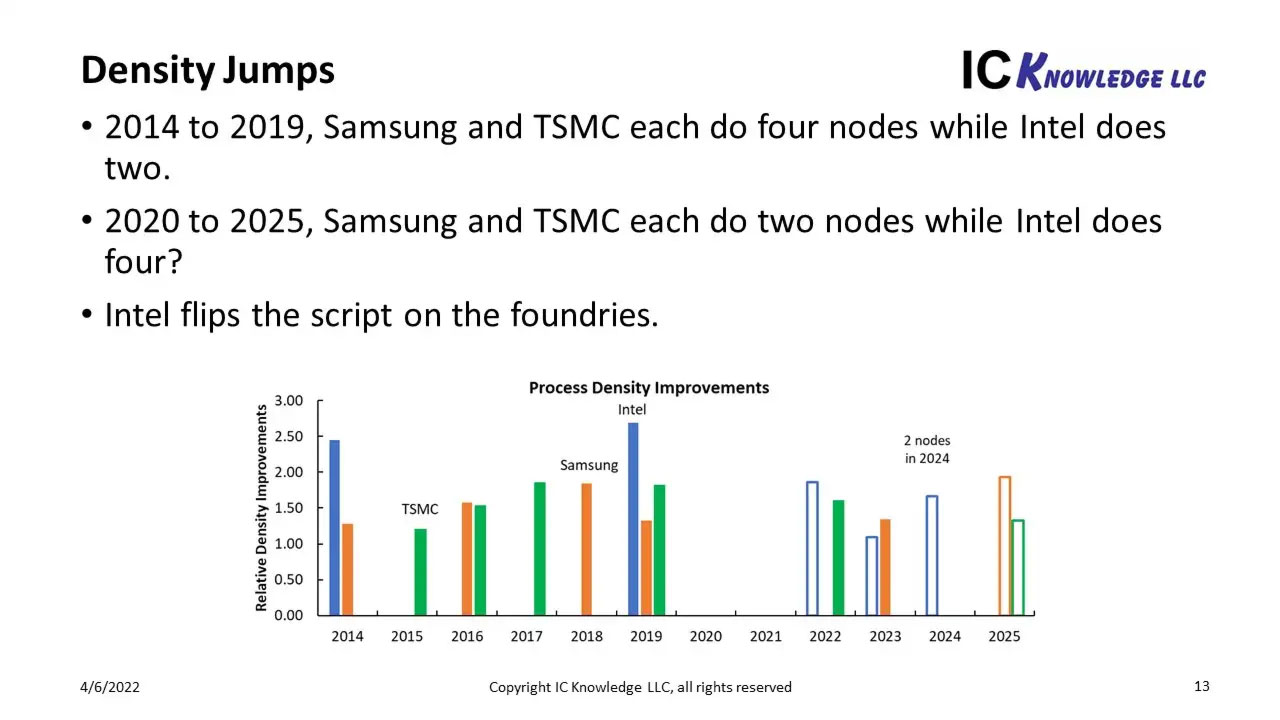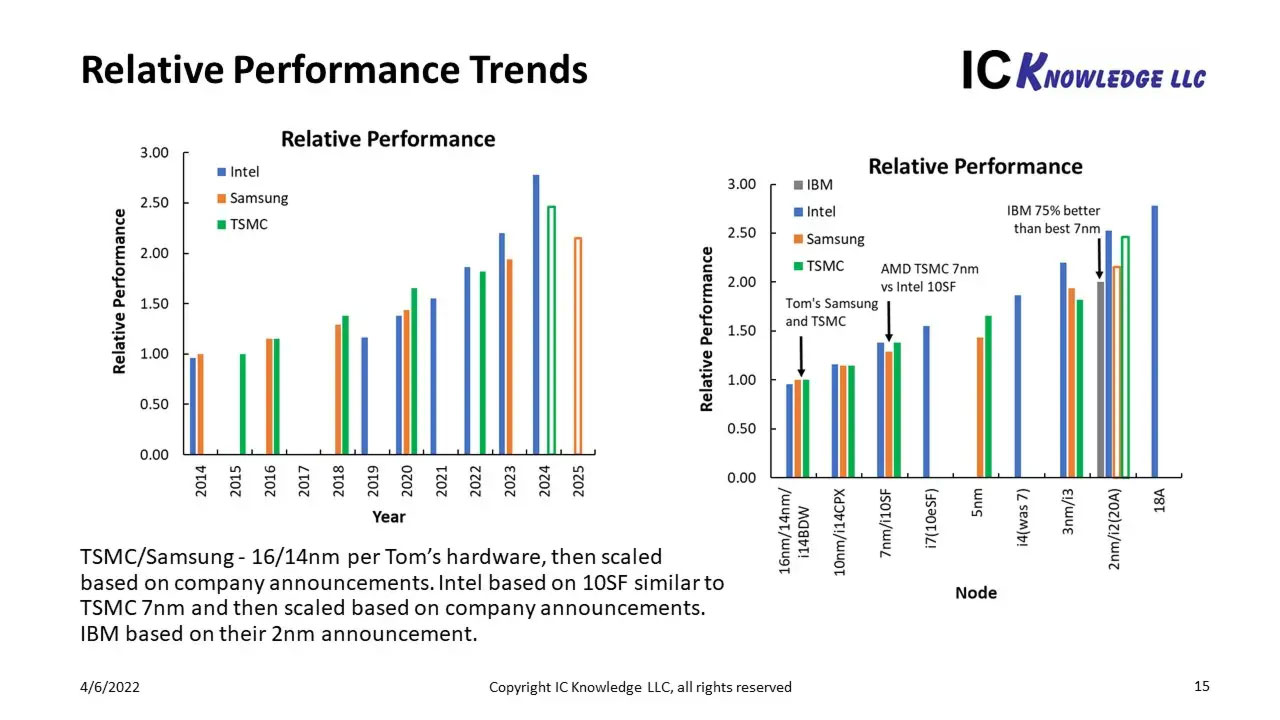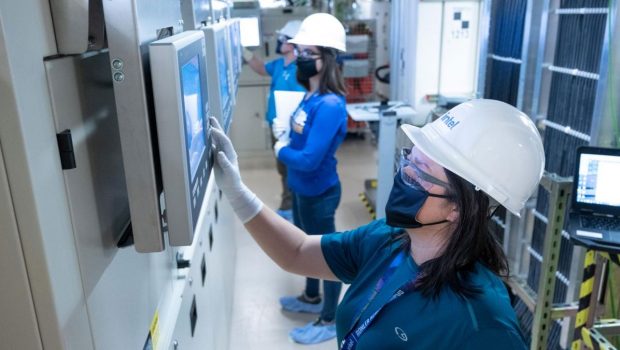Intel is currently executing its plans for the successful development of five nodes across four years in an aggressive roadmap leading into measurement in Angstrom is sometimes referred to as "Intel Accelerated."
Scotten Jones, president and owner of the semiconductor consulting company IC Knowledge, was initially skeptical about the ambitious semiconductor schedule, but his head seems to have been turned by a recent investor event.
Jones penned an article for SemiWiki this week, explaining his faith in Intel's plans for regaining its technology leadership by 2025. Until recently, Jones would tell investment firms that Intel may never catch up with TSMC. However, a mix of recent events and redrawn roadmaps has changed his mind.
The stewardship of Intel CEO Pat Gelsinger has injected a significant dose ambition into Intel. But while it is easy to talk a good game, to deliver is a different matter entirely.
As part of the celebration of opening its $3 billion D1X Mod3 fab expansion in Oregon, Intel released a slide deck. (You can see the full eleven pages in our story about the new fab expansion here.). On page five of the deck, a subtle change to the roadmap caught Jones' eye (see the singular slide above). Intel has quietly but confidently pulled in the most advanced 18A process on the roadmap, from 2025 to 2024.

In his analysis of Intel's plans, Jones looks back a few years to paint a picture showing how Intel got into this predicament – losing its technology and process leadership (for instance, treading water with 14 nm while 10 nm floundered). Where it gets more interesting is where the semiconductor boss, and senior member of the IEEE, turns on his RGB crystal ball to talk us through the rest of 2022, all the way to 2025.
According to Jones, over the next few years, in a three horse race between Intel, TSMC and Samsung, there will be various sticky patches for all the companies as they make major changes. These big changes can have an adverse impact on the roadmap, but on the other hand they are essential for grasping a competitive advantage.
From 2022 to 2025 Intel is going to employ increasing use of EUV machines. It will also start to introduce Horizontal Nanosheet (HNS) technology (a process which has slowed Samsung recently) and debuting it with RibbonFET. Improved power delivery is on the way too, using a technology called PowerVia. All the while Intel is tick-tocking along to 18A.
Looking at TSMC's hopes over the same period, Jones reckons that TSMC N3 will only become available to customers in 2023, starting with Apple's iPhones. We don't have a roadmap date for TSMC N2 as yet, and this might be a sticky patch for TSMC as it is also going to change its leading edge transistors to HNS in order to progress.
Jones also talks about Samsung's potential for progress over the period leading up to 2025. Samsung has been facing yield issues of late, and it might be down to HNS teething troubles; Samsung was the first mover in this regard with its GAA transistor technology. On the other hand, if it gets past this obstacle first it could find the coming years easier than rivals.
Intel to Take the Lead Judged by a Key Metric – Performance
After weighing up all the above, Jones reckons that TSMC will actually still be the density leader in 2025. However, performance is what matters most to customers. Jones seem so suggest this won't be an issue: "Intel has been able to significantly accelerate their process development at a time when the foundries are struggling," he wrote.

In Jones' projection chart you can see that Intel starts taking the performance lead sometime in 2023 and will be established by 2024. On the Intel roadmap 18A is now supposed to show up in the second half of 2024 (rather than 2025). This is projected to be the node where a performance per watt lead is cemented.
Of course, there is still a lot that can happen in tech between now and 2025. But it is good to see the spirited competition between the likes of Intel, TSMC and Samsung.








Gloss